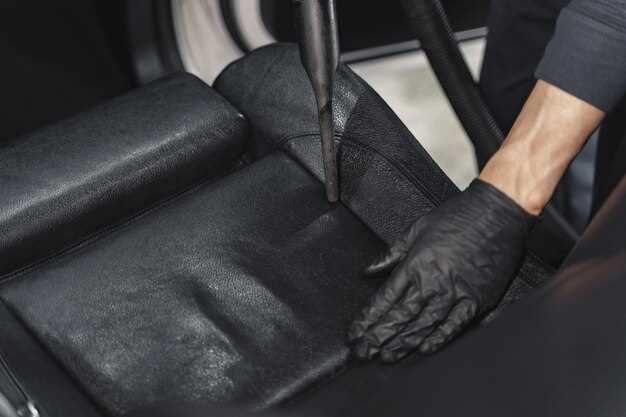
Car seats are an essential component of any vehicle, providing comfort and safety during travel. However, they are also susceptible to various forms of damage, including spills, scratches, and wear from daily use. Taking proactive steps to protect your car seats can not only extend their lifespan but also enhance your overall driving experience.
Understanding the materials used in your car seats is crucial for effective protection. Different fabrics and leathers require specific care techniques and products. For instance, fabric seats may need regular vacuuming and the use of fabric protectants, while leather seats benefit from conditioning and special cleaners to maintain their appearance and prevent cracking.
In addition to regular cleaning, implementing preventive measures can significantly reduce the risk of damage. Using seat covers, investing in high-quality mats, and establishing rules for eating and drinking within the vehicle can create a protective barrier against stains and spills. By applying these strategies, you can maintain the aesthetic and functional quality of your car seats for years to come.
Choose the Right Seat Covers for Your Vehicle

Selecting the appropriate seat covers for your vehicle is essential for protecting your car’s upholstery from wear and tear. Consider the following factors to make an informed choice:
- Material: Choose materials that suit your lifestyle. Options include:
- Neoprene: Water-resistant and ideal for active lifestyles.
- Leather: Offers a luxurious feel but may require more maintenance.
- Fabric: Available in various textures, providing comfort and breathability.
- Vinyl: Durable and easy to clean, perfect for families with children or pets.
- Fit: Ensure that the covers fit your seats perfectly. Options include:
- Custom-fit: Tailored specifically for your vehicle model.
- Universal-fit: More affordable but may not provide full coverage.
- Ease of Installation: Look for seat covers that are easy to install and remove. Check for:
- Elastic straps or hooks for secure fitting.
- Machine washable options for hassle-free cleaning.
- Style: Seat covers come in various designs to match your vehicle’s interior. Consider:
- Color schemes that complement your car’s aesthetics.
- Patterns or themes that reflect your personal style.
- Budget: Determine your budget before shopping. Price ranges vary widely. Weigh your options based on:
- Durability and quality of materials.
- Warranty and customer reviews for reliability.
Choosing the right seat covers involves balancing protection, style, and functionality. By considering these factors, you can enhance the longevity of your car’s interior while expressing your personal taste.
Use a Protective Barrier for Pets
When traveling with pets, one effective way to safeguard your car seats is by installing a protective barrier. This barrier not only prevents pets from jumping into the front seat but also reduces the likelihood of scratches, fur, and spills on your upholstery.
Various types of barriers are available, including mesh and solid options. A mesh barrier allows for visibility and air circulation while keeping your pet securely in the back. Solid barriers provide a sturdier division and can often be easier to clean if your pet is prone to messes.
Custom-fit barriers or adjustable models should be chosen based on the size of your vehicle and the breed of your pet. Ensure that the installation is secure to minimize distractions while driving. Choosing the right height is crucial, as a barrier that is too low may not contain larger breeds.
Incorporating a barrier also promotes safety. It prevents sudden movements of your pet that could distract the driver or lead to accidents. Additionally, there are specific barriers designed to fit different makes and models of vehicles, providing a tailored solution for maximum effectiveness.
Regularly inspecting and maintaining your barrier will prolong its life and effectiveness. Clean it frequently to remove pet hair and dirt that could accumulate over time. This simple precaution can save both your car’s interior and your peace of mind during travels.
Implement Regular Cleaning Routines
Maintaining your car seats in pristine condition requires a commitment to regular cleaning routines. Establishing a schedule for cleaning not only prolongs the life of your seats but also enhances your driving experience.
Begin by determining a frequency that suits your lifestyle. For example, consider cleaning your seats at least once every month. If you frequently transport pets or children, you may need to increase this frequency.
Start with a thorough vacuuming. Use a vacuum cleaner with a brush attachment to remove dirt, crumbs, and debris from the seat fabric or leather. Pay close attention to the crevices and seams where dirt tends to accumulate.
Follow up with spot cleaning for stains. Identify the type of material your seats are made of. For fabric seats, use a fabric-safe cleaner. Gently dab the stain with a clean cloth, avoiding excessive rubbing that could damage the fabric. For leather seats, use a leather cleaner and conditioner to maintain their luster and prevent cracking.
Wipe down surfaces with a microfiber cloth to remove dust and grime. This simple step helps prevent the buildup of dirt that can wear down materials over time. Consider using a mild cleaner that is safe for your seat type.
Finally, allow the seats to air out after cleaning. This reduces any lingering odors and promotes a fresh environment inside your car. By implementing these regular cleaning routines, you can effectively protect your car seats from damage and keep them looking like new for years to come.
Avoid Eating and Drinking in the Car
One of the simplest yet most effective ways to protect your car seats from damage is to avoid eating and drinking inside your vehicle. Food spills and drink stains can lead to permanent marks that are difficult, if not impossible, to remove. Crumbs can attract pests, while sticky residues can create an uncomfortable environment.
Preventing Spills: When you eat or drink in your car, the risk of spills increases significantly. Sudden stops or sharp turns can cause beverages to slosh and snacks to fall. To minimize this risk, consider establishing a strict no-food policy in the car.
Health Considerations: Beyond the damage to seats, eating in the car can lead to hygiene issues. Leftover food can develop odors and mold, creating an unpleasant atmosphere. Keeping your vehicle clean enhances not only the appearance but also your overall driving experience.
Alternative Options: If you find it challenging to forgo food or drinks during travels, consider planning your route around meal stops. Eating before or after your journey allows you to enjoy your food without jeopardizing the integrity of your car’s interior.
Conclusion: By avoiding eating and drinking in your vehicle, you can significantly prolong the lifespan of your car seats and maintain a clean, pleasant environment for yourself and your passengers. Protecting your investment is essential, and making simple lifestyle adjustments can go a long way.
Address Spills Immediately to Prevent Stains
Spills in your car can happen unexpectedly, whether it’s a coffee cup tipping over or a snack being dropped. The key to preserving your car seats is prompt action. The longer a spill sits, the more likely it is to set into the fabric or leather, making it far more challenging to clean.
As soon as you notice a spill, take a few moments to assess the situation. Quickly grab absorbent materials like paper towels or a cloth to blot the area gently. Avoid rubbing the stain, as this can push the liquid deeper into the fibers and spread the stain further.
If the spill is a liquid, like soda or juice, continue to blot until you no longer see any moisture on the surface. For food spills, carefully remove any solid pieces before treating the area.
Once you’ve absorbed as much of the spill as possible, use a mild cleaning solution suitable for your car’s upholstery. Test any cleaning solution on an inconspicuous area first to ensure it doesn’t damage the material. After applying the cleaner, blot the area again with a clean cloth to lift out any remaining residue.
After cleaning the area, allow it to air dry completely. If necessary, use a fan or open the windows to help speed up the drying process. Keeping your car well-ventilated can also help prevent odors from developing.
Regular maintenance and immediate attention to spills will help keep your car seats looking fresh and new. Remember, the faster you act, the better your chances are of preventing a permanent stain.
Consider Professional Detailing Services Periodically
Periodic professional detailing services can significantly enhance the longevity and appearance of your car seats. These services provide a thorough cleaning and protection that regular maintenance may not achieve. Utilizing the expertise of trained professionals ensures that every part of your car’s interior receives the attention it deserves.
Professional detailers use industry-grade products and equipment capable of removing deep-seated dirt, stains, and allergens from the fabric or leather of your seats. Additionally, they often apply protective coatings and conditioners that help guard against future damage, such as UV rays, spills, and wear and tear.
Below is a table summarizing the benefits of professional detailing for your car seats:
| Benefit | Description |
|---|---|
| Deep Cleaning | Technicians use specialized tools to remove deep-seated dirt and grime. |
| Stain Removal | Professional-grade products are used to effectively treat and remove stains. |
| Odor Elimination | Comprehensive cleaning helps remove unpleasant odors from car interiors. |
| Protective Treatment | Application of protective coatings shields against UV damage and spills. |
| Extended Lifespan | Regular detailing helps maintain the condition of your seats, extending their lifespan. |
By investing in professional detailing services periodically, you can ensure that your car seats remain clean, comfortable, and visually appealing, ultimately protecting your vehicle’s value over time.
